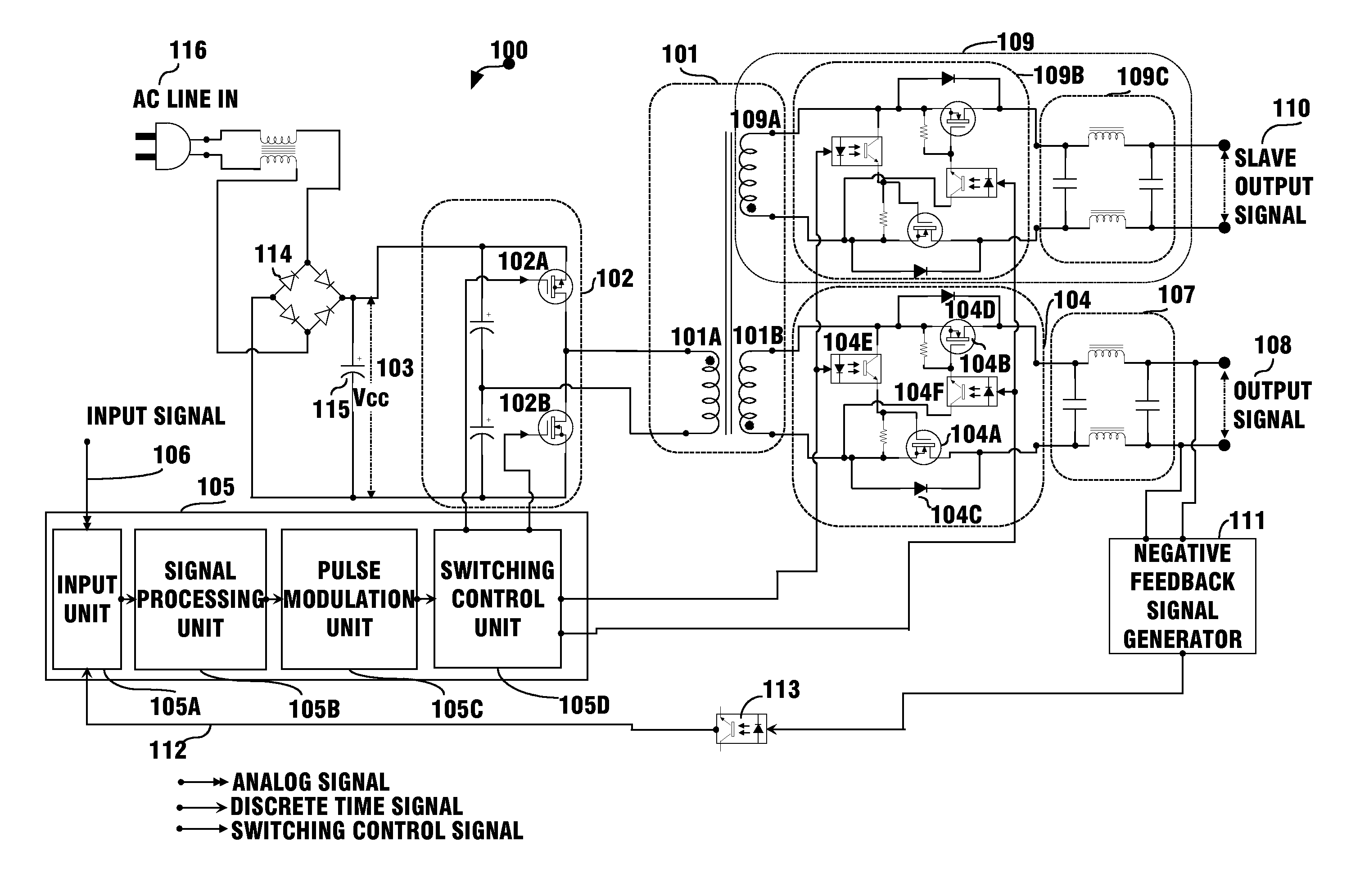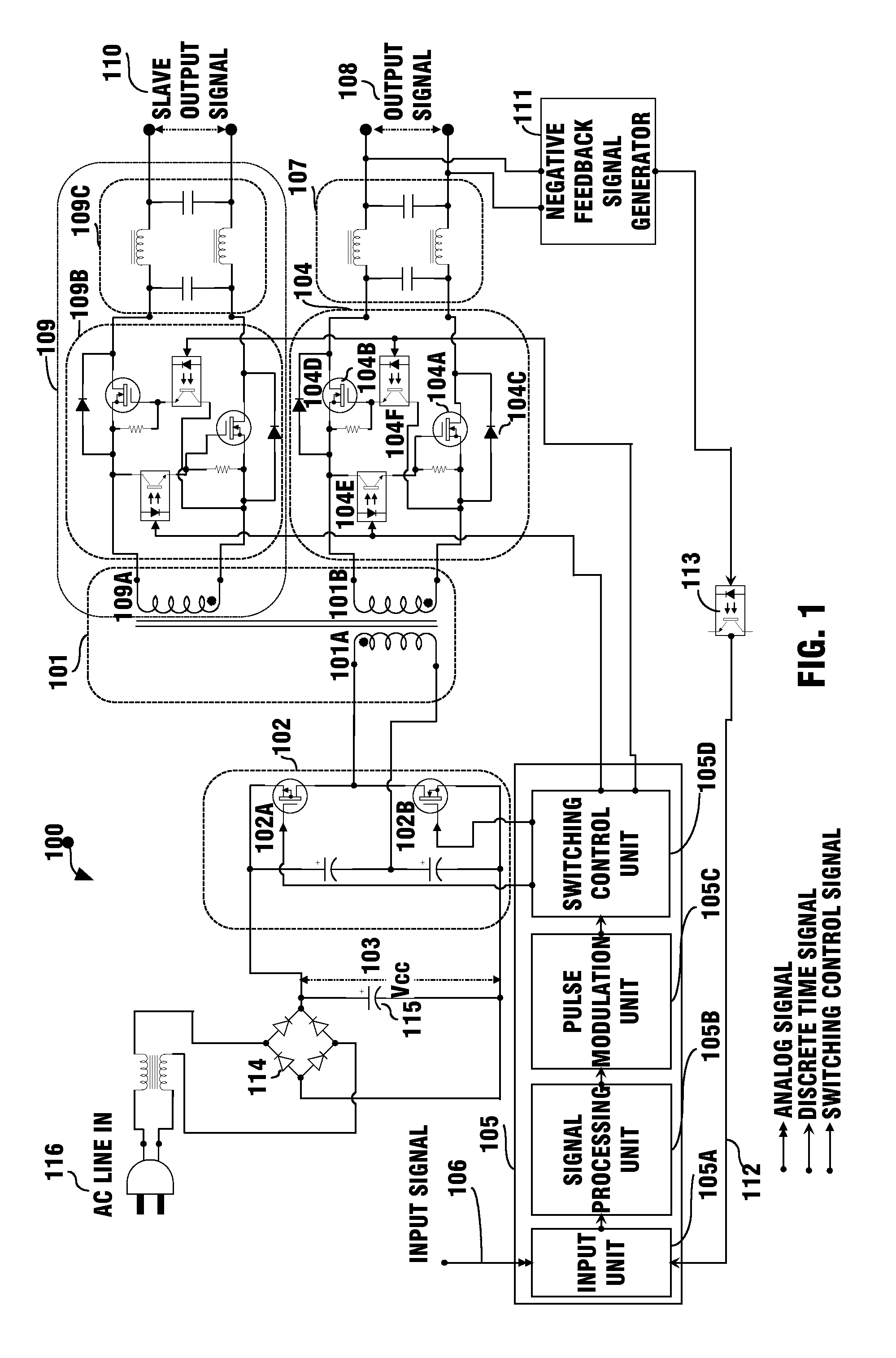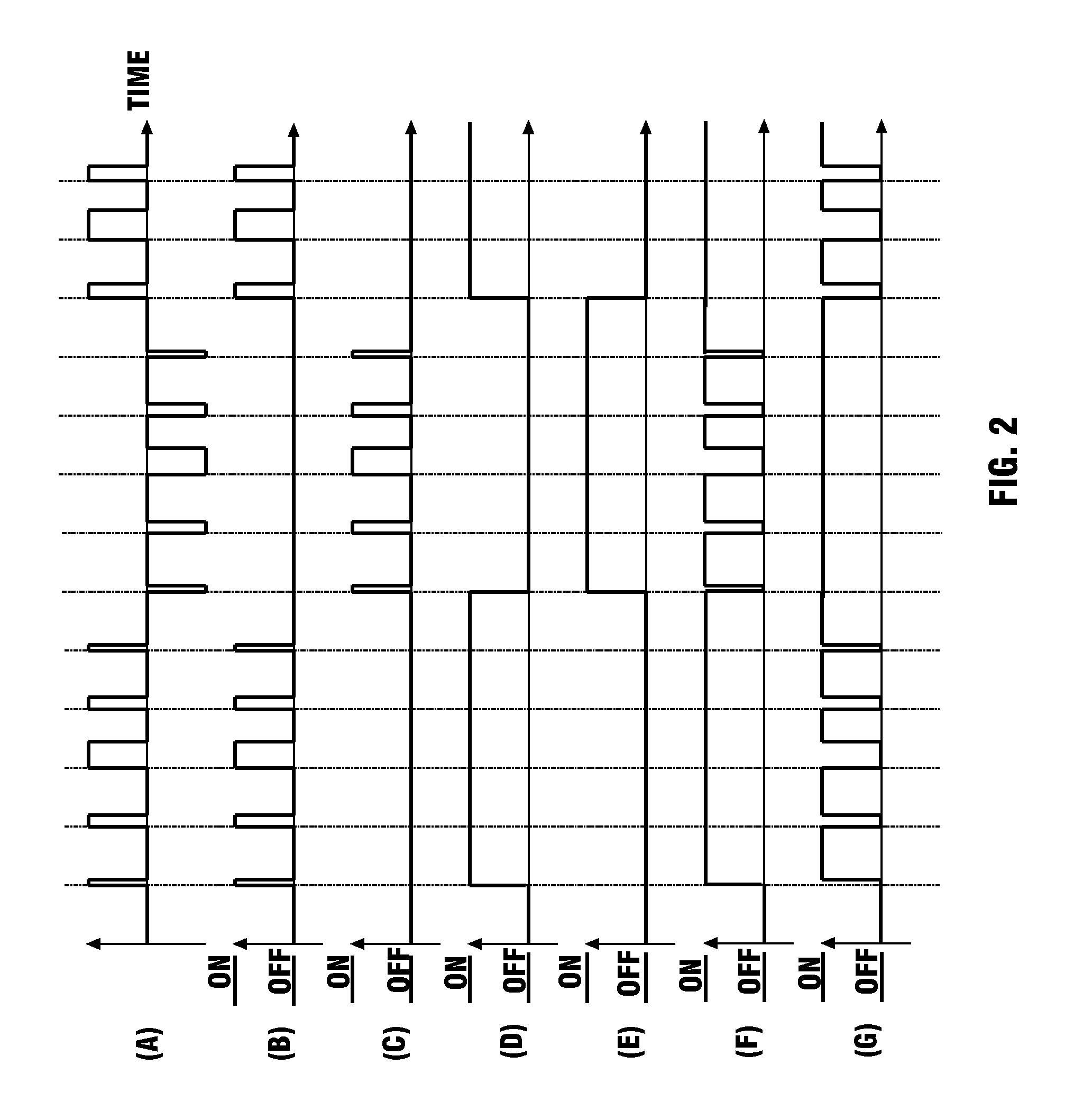Switching amplifier using flyback transformer
a technology of switching amplifier and flyback transformer, which is applied in the direction of amplifiers, amplifiers with modulator/demodulator, amplifiers, etc., can solve the problems of inefficient power usage, excessive losses, and short dead times, and achieve the effect of adding more outputs easily and economically
- Summary
- Abstract
- Description
- Claims
- Application Information
AI Technical Summary
Benefits of technology
Problems solved by technology
Method used
Image
Examples
Embodiment Construction
[0037]The detailed description set forth below in connection with the appended drawings is intended as a description of presently preferred embodiments of the invention and is not intended to represent the only forms in which the present invention may be constructed and or utilized.
[0038]FIG. 1 is an exemplary block and circuit diagram illustrating an embodiment of a switching amplifier 100 in accordance with the first method of present invention, wherein the switching amplifier 100 having switches 102A and 102B configured as a half bridge topology.
[0039]As illustrated in FIG. 1, the switching amplifier 100 of the present invention for amplifying an input signal 106 having positive and negative polarities is comprised of: a transformer 101 comprising a primary winding 101A and a secondary winding 101B magnetically coupled to the primary winding 101A; a switching unit 102 comprising two switches 102A and 102B configured as a half bridge topology coupled to the primary winding 101A fo...
PUM
 Login to View More
Login to View More Abstract
Description
Claims
Application Information
 Login to View More
Login to View More - R&D
- Intellectual Property
- Life Sciences
- Materials
- Tech Scout
- Unparalleled Data Quality
- Higher Quality Content
- 60% Fewer Hallucinations
Browse by: Latest US Patents, China's latest patents, Technical Efficacy Thesaurus, Application Domain, Technology Topic, Popular Technical Reports.
© 2025 PatSnap. All rights reserved.Legal|Privacy policy|Modern Slavery Act Transparency Statement|Sitemap|About US| Contact US: help@patsnap.com



